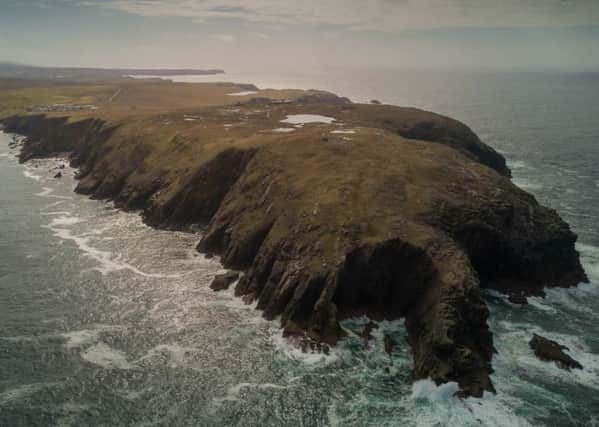Now plans are well underway to turn the old, dilapidated radio and radar surveillance station at Gallan Head '“ the most north-westerly Âheadland in Europe '“ into a Âlookout of a different nature, a Dark Skies Observatory.The Gallan Head Community Trust (GHCT) was set up to buy out the former Ministry of Defence installation on the 84-acre clifftop site at RAF Aird Uig, on the Isle of Lewis.The takeover of the station, which was used as a Cold War listening post from the 1950s and was finally left abandoned in 2010, kick-started an environmental project to create local jobs and reverse decline at the most north-westerly point of the UK. READ MORE: {http://www.scotsman.com/heritage/people-places/community-buyout-of-isle-of-lewis-cold-war-surveillance-station-1-4013406|Community buyout of Isle of Lewis Cold War surveillance station}As well as a visitor centre and tearoom, one of the major projects is the observatory, being named the Cetus Project.Expert advisors and stakeholders have gathered to discuss details for the observatory.These included John Brown OBE, Patron of the Cetus Project and Astronomer Royal for Scotland, and Donny Mackay, President of Stornoway Astronomical Society. John Brown said: 'Gallan Head has some of the darkest skies in Europe. The potential here is immense. 'With the expert advisors' help, GHCT are in the process of making something very special a reality.'Albert Shaw, acting chair of GHCT, said: 'Gallan Head Community Trust is fortified and encouraged following our workshop. 'It was fantastic to get reassurance, feedback and enthusiasm for our ideas from the wide range of experts who gave their time to support our project.'The Cetus Observatory aims to be an innovative multi-purpose eco/astro observatory, with a strong Âenvironmental ethos.The trust hopes it will delight and enthuse its visitors, no matter what the Lewis weather provides.There is no light pollution in the area and on a clear night the Milky Way appears as a white stripe across the sky. It is also a very good vantage point for the aurora borealis, the Northern Lights.The Gallan Head Community Trust aims to open the Cetus Observatory to the public in 2020.John Brown hopes to return to the island in the near future to deliver a six-inch refractor telescope which has been kindly donated to the Cetus project by the family of the late Dr Gordon Day of Dumbarton. As part of their long-term project to turn around the fortunes of the area, the trust also hope to place a hydrophone in the sea to pick up the sound of whales for visitors to hear. They hope to connect the hydrophone to a tearoom so visitors can enjoy a cup of tea and cake while listening to the world beneath the ocean. There are also plans to Âtransform one of the former MoD buildings into a planetarium. The area has some breathtaking scenery, including some of the highest cliffs and biggest caves in the country, as well as boasting some amazing heritage.Whales including orca, pilot, humpback and minke as well as basking sharks, sunfish, porpoises, dolphins and seals, shoals of fish and many seabirds can also be found in the clearest and least polluted of UK waters. READ MORE: {http://www.scotsman.com/regions/inverness-highlands-islands/charity-urges-public-to-help-north-west-highlands-geopark-1-4446206|Charity urges public to help North West Highlands Geopark}Gallan Head Community Trust is supported by the People's Health Trust with money raised by HealthKind through the Health Lottery. HealthKind is a community interest company committed to raising money to address health inequalities in Aberdeenshire, Highland, Aberdeen, Moray, Western Isles, Shetland Islands and Orkney Islands.A crowd-funding campaign can also be found at www.crowdfunder.co.uk/whales-and-tea Observatory plans for abandoned Lewis Cold War lookout
IT used to be a major player in the Cold War, acting as an early warning system against Soviet submarines and Âaircraft.

